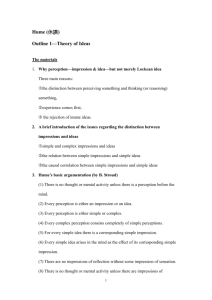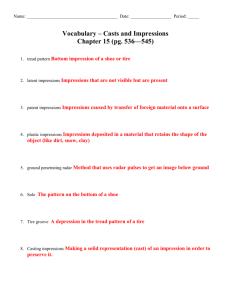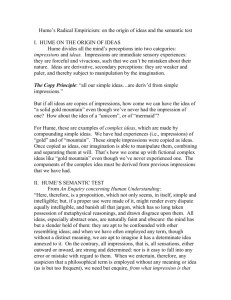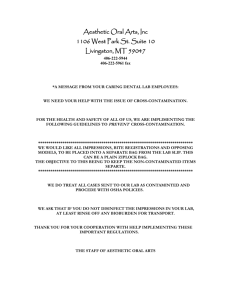CLASS AND INDIVIDUAL CHARACTERISTIC EVIDENCE
advertisement
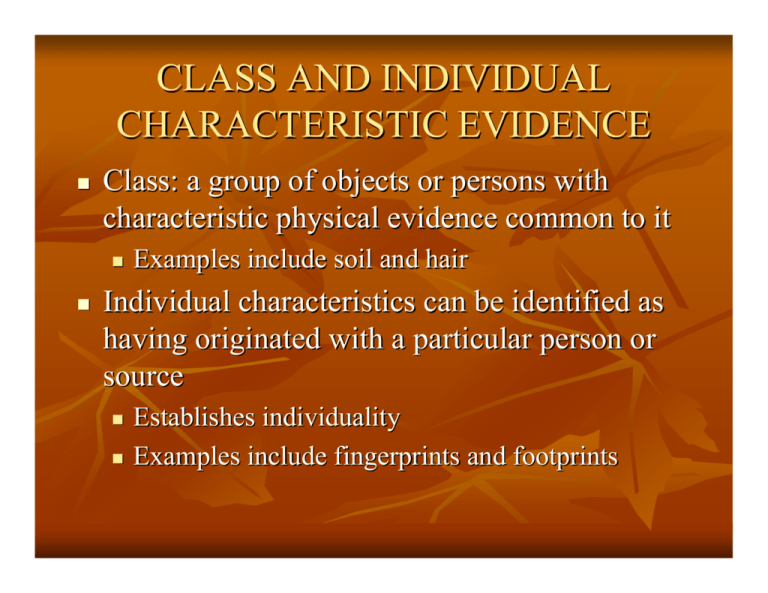
CLASS AND INDIVIDUAL CHARACTERISTIC EVIDENCE Class: a group of objects or persons with characteristic physical evidence common to it Examples include soil and hair Individual characteristics can be identified as having originated with a particular person or source Establishes individuality Examples include fingerprints and footprints PRESERVING FOOTWEAR AND IMPRESSIONS Footwear prints and impressions should be photographed: As part of the general scene Also photograph with a scale Dental Stone is used in casting impressions We will use Plaster of Paris FOOTWEAR IMPRESSIONS Photographs of footwear impressions at a crime scene In the first photo only the impressions are shown In a subsequent photo a ruler will be added to show sizes Later casts will be made of the impressions Why are footprints important Footprints and tireprints When someone walks or runs, or drives a vehicle, over soil, impressions are left in the ground. A frame is built around the print or track, a suitable casting material is poured in and allowed to dry, and then the cast removed and photographed. As shoes and tires are used, individual characteristics such as nicks, cuts, and wear patterns develop. These characteristics may show up in prints and impressions and can be compared with a suspect's shoes or tires. Footprints Through the skilful combination of tracking and footwear impressions, it is often possible to recreate the events leading up to, those occurring during, and those occurring after the crime. Collection of evidence Photography: Black and white film is normally used, unless the impression is in blood, and oblique light is shone onto the footprint. It is usual to take a series of photographs, each time varying the position of the light source, and a scale should be added to the scene. If the surface is light, the print may be highlighted using aerosol paint. How to make a casting At the scene of the crime, a footprint is observed in the soil. Your task is to make a cast of the footprint. 1 Make a dam around the impression of the footprint to hold the plaster. If the soil is of a loose sandy type, use shellac or hair spray to firm the soil before pouring in the cast. Be careful in directing the spray of the "fixer" so that it does not blow away the impression. 2 Mix the casting medium according to the instructions provided (Dental Stone if available; Plaster of Paris, if not). The ideal mixture should be pancake batter consistency. Casting Continued 3 Pour the mixture carefully down a spatula to fill the entire impression. 4 Allow the cast to set for at least an hour before removing it. 5 Comment on the characteristics of the shoe from which the impression must have been made. The impression can be compared with a shoe of the suspect, if one has been apprehended. What about flat footprints? When footprints appear on a porous material like paper or cardboard, application of a low adhesive gelatine layer lifts the prints, which can be taken away for photography and closer analysis. Sometimes, the application of fingerprint powders or electrostatic powders, or use of appropriate lighting reveals latent prints, and black, white or transparent lifters are used. Footprint Analysis: What can they tell us? Footprint impressions from casts and/or by photography will give investigators information about: · The number of criminals. · Points of entry and exit. · Positions of suspect(s), victim(s) and witness(es). · Direction(s) of movement/travel and pathway(s) through the crime scene. · Time period, from short-lived impressions in frost, snow, dew. What else can they tell us? · Sequence and manner (walking, running, limping, staggering) in which the impressions were created. · Links between crime scenes, e.g. the same criminals committing several crimes in one evening. · The type, size and areas of specific wear on the shoes. Certain seasons or weather conditions lend themselves to the creation of footprint impressions than others. Soil trapped in soles can also give useful leads, such as soil pH, specific minerals or heavy metals in the soil, the presence of seeds or pollen grains.


